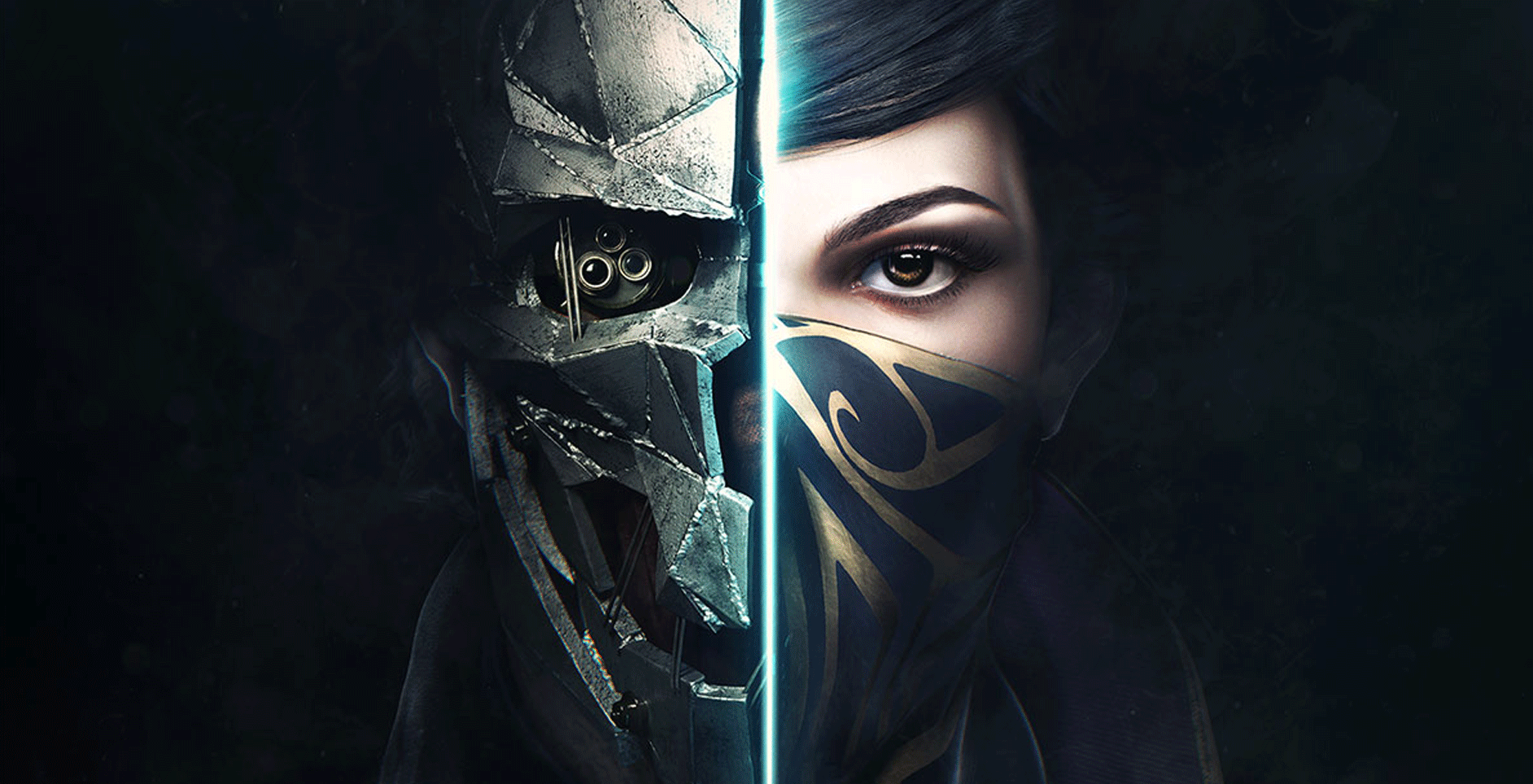I’ve always found there to be a weird link between games like BioShock, Deus Ex and Dishonored. All of them are first-person but all of them are totally committed to building strong and believable worlds. There’s some linked history between them all as well. The original Dishonored worked so well because it married the Thief franchises well-designed stealth mechanics with Deus Ex’s almost trademark penchant for successfully inviting players to explore every nook of every level. Dishonored 2 is largely the same beast as its predecessor – but it’s bigger, it’s grander and it generally does everything much, much better.
Dishonored 2 takes place fifteen years after the events of the original game. Emily Kaldwin has grown older and has assumed her role as the Empress of the Isles. Following her redevelopment of Dunwall and its expansion, Emily and her royal protector Corvo Attano are embroiled in a coup which results in Delilah, a mysterious woman claiming to be Emily’s aunt, assuming the throne and banishing Emily and Corvo out of Dunwall. With nowhere to go, they flee to Kanarca to investigate who Delilah is and how to take back what’s rightfully theirs.
 What I enjoyed about Dishonored 2 is that it’s very unapologetic in that if you never played the first game or any of its downloadable content you’ll probably be a little bit lost. There are recaps on the original games events, sure, but there’s an element of “wink-wink nudge-nudge” when the main villainess reveals herself in the opening chapter. There’s plenty of superficial references to previous characters in the series – especially given that Emily herself grew up with them – but make no mistakes, this is a story that can be improved by anyone. If anything, it’s probably a more surprising outcome if you’re playing Dishonored 2 fresh.
What I enjoyed about Dishonored 2 is that it’s very unapologetic in that if you never played the first game or any of its downloadable content you’ll probably be a little bit lost. There are recaps on the original games events, sure, but there’s an element of “wink-wink nudge-nudge” when the main villainess reveals herself in the opening chapter. There’s plenty of superficial references to previous characters in the series – especially given that Emily herself grew up with them – but make no mistakes, this is a story that can be improved by anyone. If anything, it’s probably a more surprising outcome if you’re playing Dishonored 2 fresh.
Dishonored 2 is largely like the first game – though it does it’s best to right the wrongs its predecessor committed. You play as either Corvo or Emily, and must take on missions that usually see you infiltrating a location, reaching a target, dealing with them how you see fit and then escaping. The beauty in Dishonored 2 is how it lets you deal with each of your objectives – you have free reign to approach things. Much like BioShock did for System Shock, Dishonored manages to give the underlying mechanics of Thief some modernity with some bells and whistles attached too.
The whole game can be played without killing a single person. Some targets can be exiled from their community rather than killed, for example. Others can be cured of a behaviour altering sickness that made them a target in the first place. Or you can just slit their throats. The choice is yours and commonly these choices you make will affect how the story plays out and which characters will see you to the end. Dishonored 2 doesn’t make these ambitious yet unattainable promises about player choice and consequence, but it does its best at warping your world to provide consequences to how you behave in game.
Each of the missions you’ll tackle takes place in an open world of sorts. Dishonored shies away from the typical “open world” design and instead favours a more “open level” school of design. There’s multiple pathways and multiple opportunities to capitalise on to get to your target and it’s up to you to use the game’s many systems to get past them. These levels aren’t massive sprawling overworlds but rather inviting dense playgrounds that are designed to let you use Emily or Corvo’s powers to traverse and conquer them.
Emily and Corvo both have their own unique skillsets which theoretically means that playing through the game with each character provides a largely different experience. This is both right and wrong – Corvo and Emily do have differing powers but many fulfil the same role. Corvo’s Blink ability allows him to teleport to reach higher spaces, but Emily’s Far Reach fulfils a similar role but is more like a supernatural slingshot. Both fulfil the same function, but utilise different forms. Some powers are unique – Emily can link the fates of enemies so that taking down one drops three instead, for example – but both characters are built rather equally for both stealth and action, albeit in different ways.
You can further make your Emily or Corvo as unique as you want with collectibles strewn throughout each of the level. These are in themselves sometimes a puzzle where players must work out how to find them. Runes improved your powers and abilities. Bonecharms return from the previous game too, but work a little differently. Not only do they provide small perks to your character (such as quick recovery from falls, less mana use), but they can be melted down and you can even create your own with their own attributes and abilities now too. Admittedly, it’s something higher level players might not even need to touch in their playthrough but it’s a nice feature that lets you further develop your character specific to your playstyle.
But without a doubt the biggest question I asked was whether it was worth it to make two different playable characters. Whether Dishonored 2 has the replay value that it boldly declares that it has. The short answer is yes. The long answer is maybe. Dishonored 2 is a game that you could easily breeze through in under ten hours without experiencing any of it – but this is easily the worst way to play it. It’s at its best when you take your time. When you take an hour and a half to two hours to explore and finish each chapter.
While Dishonored 2 easily can fill anywhere between 10 to 15 hours depending on your play style, it’s questionable as to whether it’s worth playing through again as another character. Yes, you’ll explore more and find even more things you missed on your first playthrough. But the character you play as only affects minor dialogue options and reactions between different characters. Those fully invested in the world of Dishonored might appreciate hearing how characters react to either Corvo or Emily, but an interwoven storyline would’ve perhaps served the game better than simply a branching, alternate one.
But perhaps my biggest qualm with the original Dishonored was just how dumb the guards and enemies were. Dishonored 2 does a lot to remedy this but it’s not without its flaws. Enemies are much more persistent and aggressive in the ways they hunt the player though they still will forget everything if you stay hidden enough. But the way the guards are smarter is what’s especially encouraging – they notice if doors are left open. They notice if a stationary guard goes missing even if they didn’t specifically see them go missing. And still despite these enemies being much more proactive, it will still all fall away if you remain hidden for enough time.
From a presentation standpoint, at least artistically, Dishonored 2 absolutely excels. Just as Dunwall did a fantastic job at offering a dystopian vision of plague era London, Karnaca does the same for Southern European locales with architectural call backs to Spain, Italy and Greece. It’s a truly stunning setting and one that visually and artistically trumps Dunwall. It’s dilapidated and oppressive yet colourful and vibrant. Eschewing the Unreal Engine for the highly customised Void engine, Dishonored 2 looks much more realistic than its predecessor. And such a stark artistic direction gives Dishonored 2 an amazing visual identity.
From a technical perspective, however, Dishonored 2 has a few issues with performance. Lighting can sometimes disappear and glitch out of the game world. At times, it was clear the engine was rendering objects at a lower resolution if they were further away from us, but as these objects grew closer the game would “forget” to switch them over to a higher resolution. It’s a minor issue but something that can be jarring.
CONCLUSION
Dishonored 2 is a huge triumph, managing to achieve the lofty goal of outdoing its predecessor in almost every way. But it’s an experience that must be played right to be enjoyed right. This isn’t a game that will be enjoyed by constantly saving and reloading to avoid detection. It’s an experience that works best when you’re constantly improvising with the numerous number of tools and powers at your disposal. It’s a game that can be played violently with little form and function or played silently and methodically. It’s the embodiment of the oft misused concept of “player choice”. And that’s why it’s a game that anybody can, and should try.
The Xbox One version of this game was primarily tested for the purpose of this review.



